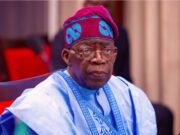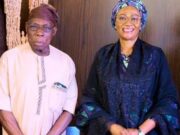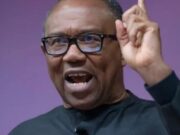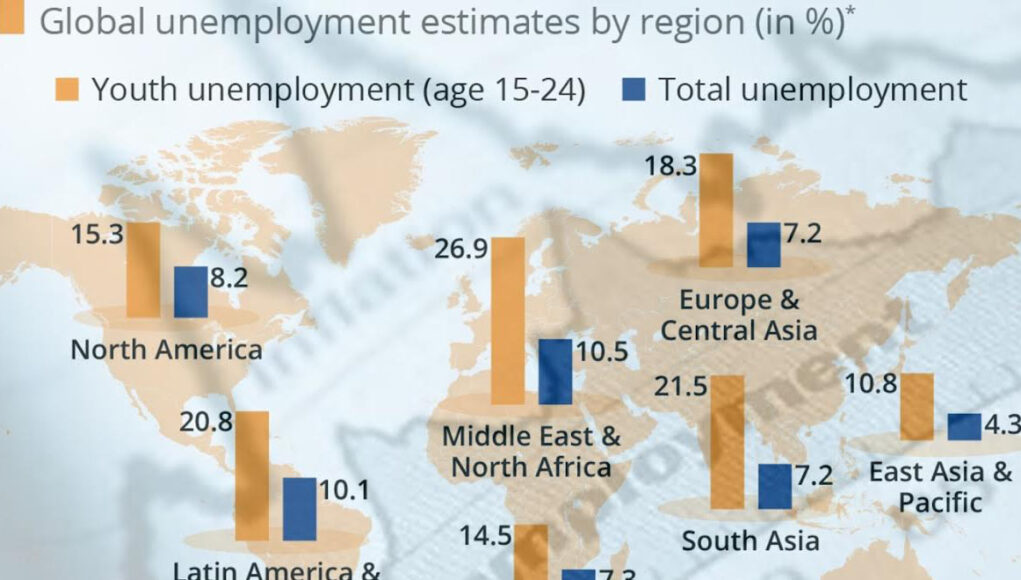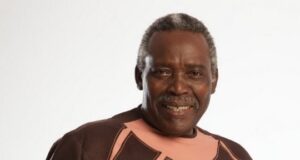
Exactly how many Nigerians are unemployed is a question nobody may be able to find an accurate answer for in the foreseeable future.
This is because Nigeria’s hyped unemployment rate dropped last Thursday, according to the National Bureau of Statistics (NBS), government’s agency saddled with the responsibility of coming up with the most accurate figure.
The agency’s immediate past CEO and former Nigeria’s Statistician-General, Dr Oyeyemi Kale, yesterday, while affirming the acknowledgement of the new methodology in older reports, argued that an intellectually thinking mindset take the best option/measurement/solution to any issue based on what is truly believed as the best as against political thinking that pushes for international standards today and against it tomorrow depending on the agenda.
The statement further raised credibility questions of the state of the nation’s health by the economy managers.
The NBS had on Thursday evening announced that in its ‘revised analytical tools’ for calculating unemployed Nigerians, it arrived at 4.1 per cent, from 33.1 per cent reported in March 2021, when it last released the employment index of the country.
While the rate was immediately dismissed as a sham and unconnected with reality by many Nigerians, the question many wanted answers to was exactly how many Nigerians are unemployed in view of the new NBS metrics.
In arriving at the new figure, the NBS said the old methodology defines the working-age population as those within the age bracket of 15-64 years and considers working between 20 and 39 hours as underemployed as well as those working between one and 19 hours as unemployed was wrong.
The NBS further highlighted that while the unemployment rate is 4.1 per cent, under-employment is 12.2 per cent. It puts youth underemployment at 6.9 per cent and youth unemployment at 18.1 per cent.
As of 2021, the total unemployed population in Nigeria was estimated at a peak of around 6.3 million. This increased from the preceding year, when around six million people were not in any form of employment.
Though the current NBS CEO, Samiu Adeyemi Adeniran, explained that the revised methodology did not translate to new jobs being created, stakeholders are of the opinion that the number of unemployed Nigerians may likely be close to 10 million.
But the Pandora box was yesterday opened by no less a person than the man who computed the last unemployment figure, Kale. Taking to his X (Twitter) page, he opened the can of worms in a series of tweets backed with documents and figures, dissecting the NBS figures to be completely out of touch with reality.
He said: “When we understand that the primary purpose of data is not politics or ego boosting/chest-thumping but evidence-based policy and to understand the problems and proffer solutions and then monitor success of those policies we will get it. But apparently, we are not ready.
“So much for the informal sector workers were never captured lie. Lying unintelligently with statistics. All that changed is allowable hours. Informal workers often tend to even work longer hours than formal workers. They are usually up before and often close after we formal sector people are home.
“An intellectually thinking mindset will make you simply look at what’s the best option/measurement/solution to any issue based on what you truly believe is best. Political thinking will make one push for international standards today and against it tomorrow depending on the agenda.
“You can’t plan for gainful employment and measure something else because of so-called international standards when various countries have different priorities. Yes, do your international comparison but you must more importantly also provide for local demands/policies.
“This means your measurement oils should align with your policy goals. If the government’s aim is to provide gainful employment, then you must measure gainful employment. If it is to guarantee just an hour of work a day then you measure that.
“We can also see here that contrary to the lies, ILO was always fully and transparently captured throughout and to use ILO for international comparison but not for our own local needs, which is to inform policy makers, whatever that policy is. That MUST be the main objective of data, not pushing out unintelligent lies,” he submitted.
Pushing the envelope further, the new NBS matrix is at variance with the KPMG report, which projected the country’s unemployment figure at 40.6 per cent at the turn of the year.
The report, ‘Global Economic Outlook’ by the global professional service firm blamed limited investment by the private sector, low industrialisation and slower economic growth for the expected spike in the number of jobless people.
Incidentally, the Nigerian section of the report, ‘Challenging macroeconomic fundamentals in a transition period’ was prepared by Kale, who is now Chief Economist at KPMG in Nigeria, alongside Associate Director, Strategy and Economics, KPMG Nigeria, Oluwole Adelokun.
The report read in part: “Unemployment is expected to continue to be a major challenge in 2023 due to the limited investment by the private sector, low industrialisation and slower than required economic growth and consequently the inability of the economy to absorb the four to five million new entrants into the Nigerian job market every year.”
Following similar logic, the Nigeria Economic Summit Group (NESG) projected Nigeria’s unemployment rate to rise to 37 per cent in the year.
The private sector-led think-tank gave the projection in its latest 2023 macroeconomic outlook report, ‘Nigeria in transition: recipes for shared prosperity’.
The projection is almost four per cent points higher than the NBS unemployment rate of 33.3 per cent as at the fourth quarter of 2020.
The 2023 outlook report, NESG said the country’s poverty headcount would increase to 45 per cent.
The report said: “The unemployment rate will increase to 37 per cent and the poverty headcount will amplify to 45 per cent due to weak performance in the job-elastic sectors, low labour absorption of sectors that will drive growth, and population growth estimated at 3.2 per cent will lead to a decline in real per capita income.”
The report noted that unemployment would remain unabated while economic growth could be supported by election-related spending and improvement in the oil sector.
Probably using the independent reports as background, stakeholders in the development space have faulted the NBS report.
The Centre for Social Justice (CSJ) said the new methodology employed by the NBS in determining the level of unemployment and underemployment in Nigeria is “an act deliberately antithetical to Nigeria’s reality.”
CSJ, in its response to the Nigeria Labour Force Statistics (NLFS) Report, which showed that unemployment in Nigeria fell from 5.3 per cent in the fourth quarter of 2022 to 4.1 per cent in the first quarter of 2023, said the figures contained in the document were misleading, hence could not be relied on for planning purpose.
CSJ rejected the NBS’s findings, arguing that they are not supported by the increasing unemployment in Nigeria since the last report in 2020, which reported a 33.3 per cent unemployment rate in Nigeria.
The Lead Director of CSJ, Eze Onyekpere, in a statement, said: “Since 2020, Nigeria’s economic challenges have increased with galloping inflation, factory closures, rural dwellers who have been prevented by insecurity from planting and harvesting and a public sector with a moratorium on new recruitments.
“The whole basis of a job report is to help the government to determine whether its plans, policies and laws geared at reducing unemployment are achieving the desired milestones. What is the point of a job report that tells the government that more Nigerians are employed when it is a clear and notorious fact that unemployment is increasing?”
The NBS now counts people who are working for at least one hour a week or who are self-employed in low-productivity activities as employed, which CSJ said was laughable and unrealistic.
“This is not an accurate reflection of the reality of the Nigerian labour market,” he said, adding, “Simply to satisfy a fad, it is a waste of taxpayers’ money to produce a report that adds no value to the Nigerian people and their economy”.
Onyekpere said CSJ believes that these statistics do not in any way reflect the prevailing economic challenges experienced by Nigerians, especially in recent times.
“Before this report, Nigeria’s last unemployment data was released in the fourth quarter of 2020, leaving a substantial gap in our understanding of the employment situation. CSJ previously emphasized the urgency for the NBS to provide up-to-date employment data for the years 2021 and 2022. CSJ recognizes that a robust job report serves as a crucial tool for governmental planning and policy evaluation. However, the reported unemployment rate of 4.1 per cent in the NLFS raises severe concerns about the relevance and accuracy of the methodology and the significance of the findings to the lived experiences of Nigerians.
“This reported rate is incongruent with the economic challenges faced by a significant percentage of the population. We call on the NBS to reconsider its methodology and ensure that it accurately captures the full spectrum of employment challenges faced by Nigerians.
“It is essential that job reports reflect the realities and provide an honest assessment of the economic landscape. Only through accurate data can the government develop effective strategies that deliver on its promises and address the pressing issues facing our nation,” Onyekpere said.
Kale absolved the present Statistician-General of the Federation of complicity concerning the number of hours that were added to the index.
He noted that ILO benchmark could be used for international comparison but not for Nigeria’s local needs.
A professor of economics at the Lagos Business School (LBS), Bongo Adi, said it appeared that the country has lost it, noting that there were things that could not be toyed with.
He stated unemployment “is one of the important variables that need to be measured because of its role in economic growth” and it is inconsistent to say that the unemployment rate has dropped that much in Nigeria, which has managed to grow at 1.9 per cent.
“If you say that unemployment has dropped to 4.1 per cent, how do you justify that? What is the productivity level? This is just statistics that do not make sense. It appears the institutions have been run by mediocre and incompetent people because there is no way you can rationalise it. The methodology does not tally, dropping from 33.3 per cent to 4.1 per cent,” he explained.
In the past five years, the country has recorded average quarterly growth of 1.8 per cent, which falls short of about 2.5 per cent population growth recorded in the past decade.
Until recently, NBS had not released official labour data. The last time they were was in 2020, after which the full impacts of COVID-19 were believed to have taken a toll on labor-intensive sectors such as manufacturing.
Insecurity also complicated the negative impacts of COVID-19, with the Manufacturing Association of Nigeria (MAN) and other advocating organisations raising the alarm that more Nigerians have been thrown out of jobs in recent years than at any other time in history.
Also responding to the NBS report, Assistant General Secretary of the Nigeria Labour Congress (NLC), Chris Onyeka, said the data do not demonstrate what is real and available on the ground, alleging that the unemployment figure could not be taken as a credible working document.
He said: “If claimed to be ILO methodology, who are the stakeholders involved in using that template? What were the sources of their data? It is just like rebasing the economy to say you are doing better, whereas you are not. The reality is more Nigerians are out of work now than before. Data has to be reviewed. We have messed up governance in Nigeria, judiciary and legislature, now it is an NBS institution.”
In the same weekend the labour statistics was released, the NBS also informed that the country’s output grew by 2.51 per cent in the second quarter of the year.
On this, the Chief Executive Officer, the Centre for the Promotion of Private Enterprises (CPPE), Dr Muda Yusuf, said the marginal 20 basis point improvement from 2.31 per cent recorded in the first quarter showed adverse effects of the ongoing reforms.
The growth, though higher on quarter-on-quarter consideration, was slow when compared to the comparative quarter of 2022, which was 3.54 per cent.
Yusuf observed that the economy slowed amid shocks from current economic reforms, which impacted energy prices and the naira exchange rate.
“The adverse impacts of the reforms were disproportionately higher than expected. However, a rebound of the economy is expected in the medium to long term as current distortions in the economy are corrected. Meanwhile, there is an immediate positive outcome which is the marked improvement in the fiscal space of governments at all levels,” he stated.
He noted that implementing the reforms is an arduous task, adding that the tradeoffs are profound while the social impacts have been devastating.
He added: “Given the inevitability of the reforms, the implementation calls for a delicate balancing act and strategic sequencing to ensure an inclusive economic transition. Dealing with the issues of insecurity, spending priorities, corruption, productivity and competitiveness, regulatory environment and macroeconomic stability are paramount to rebuilding the momentum of economic growth and development.”


